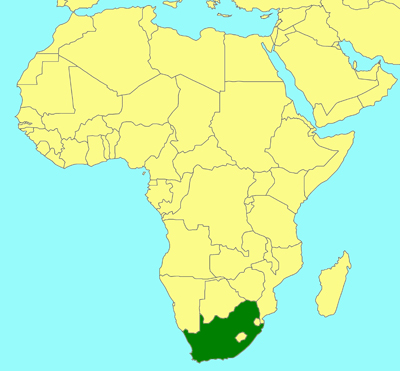 |
Ropalidia amabala
Polašek, Bellingan & van Noort (Life:
Kingdom: Metazoa (animals):
Phylum: Arthropoda:
Class: Hexapoda; Order:
Hymenoptera: Superfamily:
Vespoidea: Family:
Vespidae: Genus:
Ropalidia)
Ropalidia amabala Polašek,
Bellingan & van Noort, 2022.
Holotype ♀ in
Albany Museum, Makhanda (AMGS).
Type Locality: South Africa, Eastern Cape,
Oatlands Road, Grahamstown, 33°18'16.13S, 26°31'26.62E, South Africa, Nov
2020, leg TA Bellingan and MH Villet.
|
|

Ropalidia amabala female Fig 1 a habitus b head
c scutellum, metanotum and propodeum d T2, dorsally. |
|

Ropalidia amabala male Fig 2 a head b habitus,
inferior oblique view c antenna, dorsally. |
|

Ropalidia amabala nest Fig 3 a general appearance on a
tree trunk, b nest with wasps and closed cocoons, c
dried nest, with four tachinid cocoons.
|
South Africa, Kwazulu-Natal, Mount Michael,
Hilton, -29.575806, 30.288814, first photo is of a ♀, second two
photos are of a♂; observation by Copper Badenhorst "happyasacupcake"
https://www.inaturalist.org/observations/20355582
 |
 |

|
Distribution
|

South Africa.
|
Biology |
The nest is one
of the most striking features of this species. In contrast to all
previously known mainland African Ropalidia species, the only
examined nest of this
species was built directly on the tree trunk of a Brachychiton
sp., in an area devoid of
the surrounding lightly coloured grey lichen (Fig. 3a). The nest has the
same colour
as the lichen, suggesting that the nearby lichen fibres were used as the
nest-building
material, exhibiting a striking mimicry with the surroundings (Fig. 3b).
There are additional
reddish or blackish streaks in the cell wall; the opercula are below the
outer
cell margin, with traces of the cell wall (Fig. 3b). Notably, the
marginal cells exhibit a
fair degree of disordered building, failing to create a regular
hexagonal form (Fig. 3b).
After collection, the cell colour of the nest changed to mainly
yellowish (Fig. 3c). The
nest had 37 complete cells and about 20 incomplete marginal cells. Most
of the cells
were regular, but the marginal cells close to the lower edge of the nest
were commonly
irregular. There were 28 larvae in the nest and 24 detectable eggs; most
of marginal
cells had eggs laid in them, a single egg in each cell. The cocooned
cells were unevenly
distributed across the nest (Fig. 3b). The average cell wall width was
2.4±0.1 mm
[n=15], while the average cell length of cells with cocoons was 11.1±1.5
mm [n=11].
The closed cocoons had a flattened surface that did not reach the outer
cell margin.
The cell paper is dense and brittle. In addition, there were four empty
tachinid cocoons
in the nest (Fig. 3c), suggesting a heavy tachinid parasitoid load. At
the time
of collection, in the early morning, there were 10 females and one adult
male present
on the nest (Polašek et al. 2022). |
Reference |
Polašek O,
Bellingan T, van Noort S. 2022.
A new species of paper wasp from the genus Ropalidia Guérin-Méneville
from South Africa (Hymenoptera: Vespidae). Journal of Hymenoptera
Research 90: 213–222.
https://doi.org/10.3897/jhr.90.81581 |
Credits
|
Photographs
© Ozren Polašek (Croatian Centre for Global Health,
University of Split).
Photographs of living specimens
© Copper Badenhorst "happyasacupcake" (Hilton)
https://www.inaturalist.org/observations/20355582, or
© Terence Bellingan (Albany Museum, Grahamstown).
Map illustration
© Simon van Noort (Iziko Museums of South Africa).
|
|